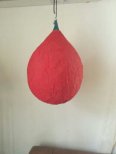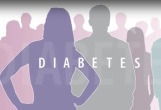written by Sarah Howard
Coordinator of the Diabetes-Obesity ScienceServ
 Usually, “diabetes” and “party” are never mentioned in the same sentence. The reasons are obvious: diabetes is a horrible, life-changing and life-threatening diagnosis. More than 400 million adults worldwide have diabetes, and more than half a million children under 15 have type 1 diabetes. One in seven infants worldwide are exposed to their mother’s high glucose levels in the womb. (Source: IDF Diabetes Atlas, 2015).
Usually, “diabetes” and “party” are never mentioned in the same sentence. The reasons are obvious: diabetes is a horrible, life-changing and life-threatening diagnosis. More than 400 million adults worldwide have diabetes, and more than half a million children under 15 have type 1 diabetes. One in seven infants worldwide are exposed to their mother’s high glucose levels in the womb. (Source: IDF Diabetes Atlas, 2015).
In addition, international scientists are now researching the role of environmental chemical exposures in diabetes. Convincing laboratory and epidemiological evidence has been published suggesting that exposure to “metabolic disrupting” chemicals may contribute to the development of diabetes in later life, especially if the exposure occurred early in life. (Source: Heindel et al. Parma Consensus Statement on Metabolic Disruptors. 2015.)
But if you have lived with diabetes, you are probably up to your ears in statistics and studies. Every now and then you need a break. And so, we celebrate World Diabetes Day every year on November 14, to honor the birthday of Sir Frederick Banting, the man credited with discovering insulin and saving millions of lives. In 2016, this day also happened to be the 10-year anniversary of my son Teddy’s type 1 diabetes diagnosis. So clearly, it was time to party!
I have never acknowledged Teddy’s diagnosis day (or “diaversary”) in any way before, although many people do something special for their child on that day. We decided to host a surprise party for him, which would really be a surprise since he did not even know his diagnosis date, and would not be suspected anything. I had a lot of fun thinking of party ideas during the week prior, which was a welcome change from the daily grind of type 1 diabetes management.
We invited two of Teddy’s friends who have type 1 diabetes along with their families, as well as few of his closest friends and their parents—who are my reliable babysitters. Part of the purpose was to thank these babysitters, who have watched him at their house — even at sleepovers– allowing him to feel like a normal kid. We had everyone over for dinner at our house. One family babysat Teddy for the few hours prior to the party so we could set up the house and surprise him. He was indeed surprised! After dinner, we started in on the fun!
Show the diabetes piñata how you really feel
 Who loves having diabetes? No one. What better way to express your true feelings about diabetes than to whack a diabetes piñata. How can you make a piñata that represents diabetes? Well, what is diabetes? High blood sugar. So I made a paper mache piñata in the shape of blood drop (which just happens to be the same shape as a balloon), color it red, and fill it with candy. Easy! Plus, it’s a great way to get rid of Halloween leftovers!
Who loves having diabetes? No one. What better way to express your true feelings about diabetes than to whack a diabetes piñata. How can you make a piñata that represents diabetes? Well, what is diabetes? High blood sugar. So I made a paper mache piñata in the shape of blood drop (which just happens to be the same shape as a balloon), color it red, and fill it with candy. Easy! Plus, it’s a great way to get rid of Halloween leftovers!
Guess how many
 Anyone with diabetes likely has a lot of diabetes-related things lying around. Cabinets full of things. I put some of these things in clear containers, and everyone guessed how many items were in each jar. Winners received either a “low blood sugar treatment kit” (i.e., candy) or a “high blood sugar snack kit” (i.e., cheese). I actually did count the number of syringes, lancets, pen needles, and used insulin pump batteries—all things that we happened to have lying around in abundance. I did not count the numbers of used needles (too dangerous) or used test strips (too gross), but picked random winners. And then there was the jar of empty Halloween candy wrappers. I had asked, “How many carbs?” We called it a tie, since one kid wrote “0” (“because there are no carbs in the wrappers,” which is technically correct), and one who wrote “100,000” (because that was the closest to my answer, “too many”).
Anyone with diabetes likely has a lot of diabetes-related things lying around. Cabinets full of things. I put some of these things in clear containers, and everyone guessed how many items were in each jar. Winners received either a “low blood sugar treatment kit” (i.e., candy) or a “high blood sugar snack kit” (i.e., cheese). I actually did count the number of syringes, lancets, pen needles, and used insulin pump batteries—all things that we happened to have lying around in abundance. I did not count the numbers of used needles (too dangerous) or used test strips (too gross), but picked random winners. And then there was the jar of empty Halloween candy wrappers. I had asked, “How many carbs?” We called it a tie, since one kid wrote “0” (“because there are no carbs in the wrappers,” which is technically correct), and one who wrote “100,000” (because that was the closest to my answer, “too many”).
Where’s the alarm?
Wait, do you hear that? What’s that alarm? Is someone high? Is someone low? Is someone’s pump out of insulin? Is there a low battery? There’s an alarm going off somewhere in the house, quick, find it! (It was my alarm clock, set to go off at a random time in the middle of the party).
Tour the diabetes museum
I have had type 1 diabetes for 17 years, and my son has had it for 10. We have a lot of old supplies gathering dust in the basement. I put them in shoeboxes on display, and even my son enjoyed looking at these things he did not even remember—like the junior insulin pen he used when he was 1 year old. He has been on a pump so long he didn’t even know what an insulin pen looked like. We had his old pumps too—you never know when these things will come in handy. In fact, it is because of these supplies that my husband has been able to make us artificial pancreases, which require the use of old pumps. (We also had his “Artificial Pancreas Lab” on display in the museum.)
What do you get someone with diabetes?
 We got him a new pancreas. The fuzzy, stuffed kind that are available on Amazon. He slept cuddling it last night. He also learned what a pancreas looks like, apparently he had thought it was round. One friend with diabetes made him a booklet of hilarious Diabetes Memes that only those with diabetes could fully understand. My favorite gift, however, was presented by another friend, who made a shield and holy grail out of aluminum (since the 10 year anniversary is tin/aluminum). He then knighted Teddy and read this proclamation:
We got him a new pancreas. The fuzzy, stuffed kind that are available on Amazon. He slept cuddling it last night. He also learned what a pancreas looks like, apparently he had thought it was round. One friend with diabetes made him a booklet of hilarious Diabetes Memes that only those with diabetes could fully understand. My favorite gift, however, was presented by another friend, who made a shield and holy grail out of aluminum (since the 10 year anniversary is tin/aluminum). He then knighted Teddy and read this proclamation:
Hear Ye, Hear Ye!
Be it thus noted that Sir Theodore Howard
Has these yon 10 years passed
Fought the good fight against
The dread diabetes type 1
May he be successful
In his continued valiant efforts
To banish the dread diabetes
With the holy grail of diabetes cures
So that over the next 10 years
We may yet again gather to celebrate
The vanquished foe
We dub thee Sir Teddy
And his heroic knights of the Howard table
Time to celebrate
With cake, decorated to look like a continuous glucose monitor. The cake says his blood sugar is 40 and going down rapidly, meaning it must be time to eat cake! But of course it has to be accompanied by ice cream, since you want some fat and protein to balance out those carbs.
And then it was over. We had a couple of low blood sugars during the course of party, and presumably a couple of highs as well, considering four of the attendees had type 1 diabetes and a lot of carbs were consumed. But we all survived. To help ensure that we keep surviving, we gave out expired glucagon kits as party favors, so our friends could practice using them. With their help, and the help of scientists studying diabetes around the globe, we are not just surviving, but partying as well.
 In fact, two of my favorite diabetes scientists, Dr. Mary Turyk and Dr. Robert Sargis, will be speaking on a CHE call on Tuesday, Nov. 29 at 10 am PST/ 1 pm EST. They will discuss their research on Chemical Contributors to Type 2 Diabetes. Please join us! And thank you to everyone around the world, including friends, family, researchers, advocates, and all who help make this disease more bearable. If you could all fit in my house, I’d have you over for cake and ice cream as well.
In fact, two of my favorite diabetes scientists, Dr. Mary Turyk and Dr. Robert Sargis, will be speaking on a CHE call on Tuesday, Nov. 29 at 10 am PST/ 1 pm EST. They will discuss their research on Chemical Contributors to Type 2 Diabetes. Please join us! And thank you to everyone around the world, including friends, family, researchers, advocates, and all who help make this disease more bearable. If you could all fit in my house, I’d have you over for cake and ice cream as well.

 With substantial media focus on the
With substantial media focus on the 



